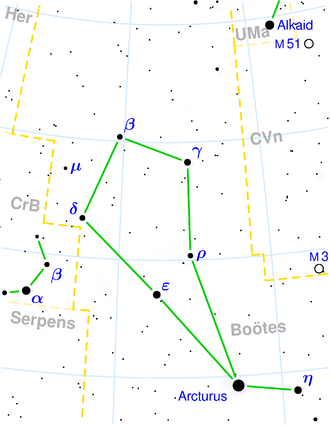NGC 5787
| Galaxy NGC 5787 |
|
|---|---|

|
|
| SDSS recording | |
| AladinLite | |
| Constellation | Bear keeper |
|
Position equinox : J2000.0 , epoch : J2000.0 |
|
| Right ascension | 14 h 55 m 14.6 s |
| declination | + 42 ° 30 ′ 25 ″ |
| Appearance | |
| Morphological type | S? |
| Brightness (visual) | 13.2 mag |
| Brightness (B-band) | 14.1 mag |
| Angular expansion | 1.0 ′ × 0.9 ′ |
| Position angle | 0 ° |
| Surface brightness | 12.9 mag / arcmin² |
| Physical data | |
| Redshift | 0.018296 ± 0.000137 |
| Radial velocity | (5485 ± 41) km / s |
|
Stroke distance v rad / H 0 |
(250 ± 18) x 10 6 ly (76.7 ± 5.4) Mpc |
| history | |
| discovery | Wilhelm Herschel |
| Discovery date | April 5, 1787 |
| Catalog names | |
| NGC 5787 • UGC 9599 • PGC 53339 • CGCG 221-013 • MCG + 07-31-08 • 2MASX J14551561 + 4230246 • GC 4010 • H II 677 • h 1888 • LDCE 1088 NED003 | |
NGC 5787 is a 13.2 mag bright spiral-shaped "blue compact galaxy" (compact galaxy with large young star clusters and hot, massive stars) of the Hubble type S? in the constellation Bearkeeper . It is estimated to be 250 million light years from the Milky Way and about 75,000 light years in diameter.
The object was discovered on April 5, 1787 by Wilhelm Herschel with an 18.7-inch reflector telescope, who described it as "F, pS, lbM".
